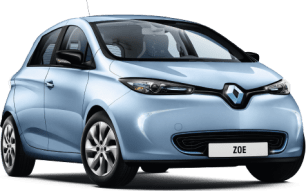The odds are stacked against the Leaf in this department, as it arrives in Australia in just one spec level, priced at $49,990 (plus on-road costs).
You’re probably thinking: "Are you serious? Fifty grand for a hatchback?" And you’d be right. Without any EV rebates like the Leaf receives in Europe, the pricing is a tall order. You’d have to really be going out of your way to choose an EV lifestyle, it’s not simply a $2k to $5k spec switch like from petrol to diesel.
That having been said, Nissan has helped soften the blow a bit by giving the Leaf a plush set of specs. This is a nice hatchback, with all the tech and connectivity items you could realistically want. In fact, it’s by far the best-specified Nissan you can buy right now.
First of all, the Leaf that’s finally arrived in Australia has received some sort of minor update over the one we drove just a few months ago.
Included is a new centre stack with a new 8.0-inch multimedia touchscreen, the first for Nissan in Australia to host Apple CarPlay and Android Auto (better late than never…), as well as built-in navigation, Bluetooth connectivity, backed by a seven-speaker Bose-branded audio system.
There’s also plush leather seats which you seem to sink into, with Alcantara highlight trim, a leather steering wheel, a power adjustable driver’s seat and heated seats across the front and back rows, and a heated steering wheel.
Nissan says heated seats are the most power efficient way to heat occupants up, rather than just blasting the single-zone climate control.
Other spec items you get include keyless entry, push-start ignition, 17-inch alloy wheels, a 7.0-inch partially-digital dash, as well as full LED lighting front and rear.
There’s also Nissan’s full suite of active safety technology, which is impressive stuff, explored more in the safety section of this review.
The Leaf is the only EV in Australia which is capable of two-way charging via its Japanese-standard CHAdeMO charging port. The brand says you’ll be able to use this feature to use the Leaf as a “portable energy asset” – this means the car will be capable of storing energy in off-peak power-grid times, then using it to power your home cheaply in on-peak times.
This will require a piece of hardware which is not yet available in Australia, but will be “in around 12 months” after Nissan and its energy tech partner, JetCharge, get it approved by Australian regulators.
The hardware will appear like a "wall box" device, and will cost "less than $2000".
You could argue a similarly-specified hatchback this size with a petrol engine would only cost in the mid-to-late $30k price bracket. So, you’re paying about $15,000 for the EV drivetrain and everything that involves.
You can slide into the less-powerful and slightly more limited-on-range Hyundai Ioniq EV, which is this car’s closest competitor, for about $5000 less. You’ll miss out on the two-way charging tech though.

